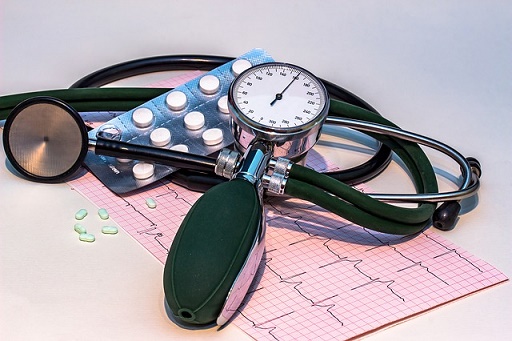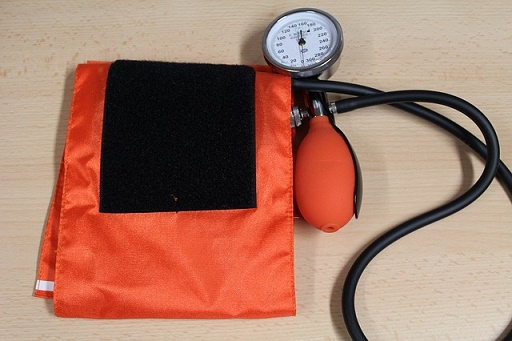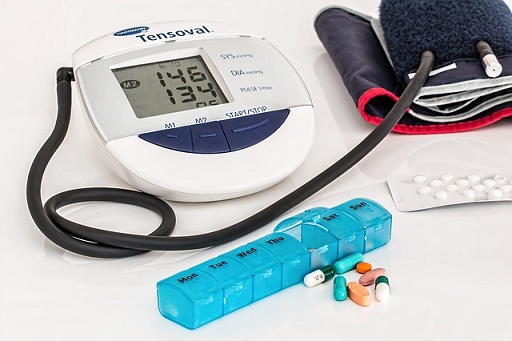
Hypertension, or high blood pressure, is an issue that affects millions of people around the world. If not properly treated, hypertension can lead to serious issues, including heart attack or stroke. That means it’s imperative to have an accurate nursing diagnosis for hypertension as well as an effective care plan.
After explaining what hypertension is, what causes it, and what common symptoms are, this guide explains six key hypertension nursing diagnoses. For each diagnosis, the NANDA definition, potential evidence, and desired outcomes are explained, as well as steps to take for the nursing intervention.
Nursing Diagnosis for Hypertension: What Is It?
Normal blood pressure is when blood pressure is lower than 120/80 mmHg most of the time. A patient is diagnosed with hypertension, the medical term for high blood pressure, when their blood pressure is 140/90 mmHg most of the time.
There are several levels of hypertension:
- Normal Blood Pressure: Lower than 120/ 80
- Prehypertension: 120-139/80-89
- Stage 1 Hypertension: 140-159/90-99
- Stage 2 Hypertension: 160+/100+
Hypertension can be dangerous because it can make the heart work harder to pump blood to the body, which can increase the risk of heart failure, stroke, and hardening of the arteries.
What Causes Hypertension?
The exact cause of hypertension is not often known. Primary (or essential) hypertension is when hypertension has no known cause, or there is no evidence to link it to a specific cause. Primary hypertension makes up about 90% of all hypertension cases. Secondary hypertension is high blood pressure that does have an identifiable cause.
Potential causes of hypertension (primary or secondary) include:
- Being overweight or obese
- Smoking
- Genetics/family history of hypertension
- A diet high in salt
- Consuming more than 1-2 alcoholic drinks a day
- Stress
- Old age
- Lack of exercise
- Sleep apnea
- Kidney disease
- Thyroid disorders
Signs and Symptoms of Hypertension
Hypertension does not always cause symptoms; in fact, about a third of people who have hypertension don’t know they have it because of no or few symptoms.
Below are some of the most common symptoms of hypertension:
- Headache
- Ringing or buzzing in the ears
- Fatigue
- Irregular heartbeat
- Confusion or dizziness
- Nosebleed
- Blurred vision
- Difficulty breathing
- Chest pain
- Blood in the urine

Nursing Care Plans for Hypertension
Once a patient is found to have high blood pressure, it’s important to follow the appropriate nursing diagnosis and nursing care plan for hypertension in order to reduce the effects of hypertension and keep the patient’s health and quality of life high. Below are six nursing care plans for hypertension. These six care plans cover the main issues associated with hypertension. Each one includes its own nursing diagnosis, NANDA definition, possible signs of evidence, desired outcome, and nursing interventions.
Use the NANDA definition and potential evidence to determine the correct nursing care plan for hypertension. Some patients may require multiple care plans.
Hypertension Nursing Diagnosis #1: Risk for Decreased Cardiac Output
NANDA Definition: Inadequate blood pumped by the heart to meet metabolic demands of the body.
Possibly Evidenced By:
- N/A. This intervention is used to in order to prevent decreased cardiac output from occurring.
Desired Outcomes:
- Show stable cardiac rhythm and rate.
- Maintain blood pressure within an acceptable range.
- Participate in activities that lower blood pressure and cardiac load.
Interventions:
- Check patient’s lab data (cardiac markers, blood cell count, electrolytes, ABGs, etc.) to determine contributing factors.
- Monitor and record blood pressure in both arms and thighs
- Measure blood pressure in both hands.
- Auscultation of breath sounds and heart rhythm. Observe patient’s skin color, temperature, and capillary refill time.
- Advise the patient on reducing sodium intake, if needed.
- Administer medication, if needed.
Hypertension Nursing Diagnosis #2: Acute Pain (Typically Headache)
NANDA Definition: Pain is whatever the experiencing person says it is, existing whenever the person says it does; an unpleasant sensory and emotional experience arising from actual or potential tissue damage or described in terms of such damage sudden or slow onset of any intensity from mild to severe with an anticipated or predictable end and a duration of.
Possibly Evidenced By:
- Patient reports throbbing pain in head, most often upon awakening.
- Changes in appetite.
- Patient reports neck stiffness, blurred vision, dizziness, nausea, and/or vomiting.
Desired Outcomes:
- Patient states they are no longer suffering from a headache and appear comfortable and pain-free.
Interventions:
- Determine the specifics of the pain, such as intensity, where it is located, and how long it has been going on.
- Note the patient’s attitude towards pain and any history of substance abuse.
- Encourage rest during severe pain episodes.
- Recommend methods of relief, such as neck and back rubs, applying cool cloths to the forehead, and avoiding bright lights.
- Limit how much the patient moves around.
- Provide medication, if needed.
Hypertension Nursing Diagnosis #3: Activity Intolerance
NANDA Definition: Insufficient physiological or psychological energy to endure or complete required or desired daily activities.
Possibly Evidenced By:
- Patient reporting weakness or fatigue.
- Abnormal heart rate as a result of activity.
- Exertional discomfort or dyspnea.
- Electrocardiogram (ECG) changes reflecting ischemia; dysrhythmias.
Desired Outcomes:
- Patient participates in necessary and/or desired activities.
- Uses identified techniques to enhance activity tolerance.
- Reports a measurable increase in his/her tolerance for activity.
- Demonstrates a decrease in noticeable signs of intolerance.
Interventions:
- Note each of the factors that contribute to fatigue (age, health, illness, etc.).
- Evaluate the patient’s degree of activity intolerance and when it occurs.
- Monitor how the patient responds to activity (pulse, heart rate, chest pain, dizziness, excessive fatigue, etc.).
- Explain energy conserving techniques (shower chairs, sitting to brush teeth, etc.).
- Assess any emotional factors that may be contributing to activity intolerance (such as depression or anxiety).
- Encourage the patient to engage in self-care and progressive activity when possible.

Hypertension Nursing Diagnosis #4: Ineffective Coping
NANDA Definition: Inability to form a valid appraisal of the stressors, inadequate choices of practiced responses, and/or inability to use available resources.
Possibly Evidenced By:
- Patient states he/she is unable to cope; patient asks for help.
- Worry, irritability, anxiety, and/or depression as a result of hypertension diagnosis.
- Destructive behavior such as overeating, lack of appetite; excessive smoking/drinking, and/or alcohol abuse
Desired Outcomes:
- Patient can identify his/her ineffective coping techniques and their consequences.
- Verbalizes awareness of own coping abilities.
- Identifies potentially stressful situations and takes steps to avoid or modify them.
- Shows the use of effective coping skills.
Interventions:
- Determine what specific areas the patient has difficulty coping with.
- Assess the effectiveness of the patient’s current coping skills and where improvements can be made.
- Help the patient identify specific stressors and how to cope with them.
- Work with the patient to develop a care plan, and encourage participation in the plan.
- Help the patient identify and begin planning for necessary lifestyle changes.
- Encourage the patient to evaluate his/her priorities and goals in life.
Hypertension Nursing Diagnosis #5: Imbalanced Nutrition (More Than Body Requirements)
NANDA Definition: Intake of nutrients that exceeds metabolic needs.
Possibly Evidenced By:
- Patient’s weight is 10%–20% more than ideal his/her height and frame.
- Reported or observed dysfunctional eating patterns.
Desired Outcomes:
- Patient understands the relationship between hypertension and obesity.
- Initiates/maintains an appropriate exercise program.
- Shows changes in eating patterns, such as food choice and/or quantity, to attain a healthier body weight.
Interventions:
- Assess the patient’s understanding of the relationship between hypertension and obesity.
- Discuss the relationship between hypertension and obesity with the patient.
- Discuss the need for a decreased caloric intake, as well as a limited intake of salt, sugar, and fat.
- Determine the patient’s desire to lose weight.
- Help the patient establish a realistic exercise plan.
- Help the patient establish a realistic nutrition plan.
- Refer the patient to a nutritionist, if needed.
Hypertension Nursing Diagnosis #6: Knowledge Deficit
NANDA Definition: Absence or deficiency of cognitive information related to a specific topic.
Possibly Evidenced By:
- Verbalization of the problem.
- Patient requires information or more information, or he/she doesn’t understand the information given.
- Patient inaccurately follows instructions.
- Patient appears agitated, hostile, or upset when the condition and ways for managing it are discussed.
Desired Outcomes:
- Patient can express his/her knowledge of the management and treatment of hypertension.
- Patient correctly uses the drugs they are prescribed and understand their side effects.
Interventions:
- Determine what information the patient currently understands.
- Assess readiness and blocks to learning. Include the patient’s partner, if possible.
- Describe the nature of hypertension, how it affects different parts of the body, and how it can be treated.
- Avoid using the term “normal BP”. Instead use the term “well-controlled” to describe patient’s BP within desired limits.
- Discuss with the patient changes he/she can make in order to manage hypertension.
- Discuss the importance of maintaining a stable weight.
- Discuss the need for low-calorie diet, low in sodium to order.
- Help the patient create a schedule for taking medications.
- Direct the patient to other resources that can be used to better understand and manage hypertension.
Review: Diagnosing and Treating Hypertension
Hypertension, the medical term for high blood pressure, is an issue that can have serious and long-term health effects if it isn’t properly managed. Therefore, having an effective nursing care plan for hypertension is important.
While it’s often difficult to pinpoint the cause of hypertension, high blood pressure may be caused by the weight, smoking, high sodium intake, and/or genetics, as well as other factors. Some symptoms of hypertension can include headache, dizziness, fatigue, difficulty breathing, and/or chest pain, although some patients with hypertension don’t show any symptoms.
There are six key nursing diagnoses for hypertension.
- Risk for decreased cardiac output
- Acute pain (typically headache)
- Activity intolerance
- Ineffective coping
- Imbalanced nutrition (more than body requirements)
- Knowledge deficit
For each nursing diagnosis for hypertension, it’s important to know the NANDA definition, possible signs of evidence, desired outcome, and nursing interventions.
What's Next?
Thinking about exploring a career in healthcare administration? Read our complete guide to getting a healthcare administration degree, with explanations for what levels of qualification you need for different careers.









